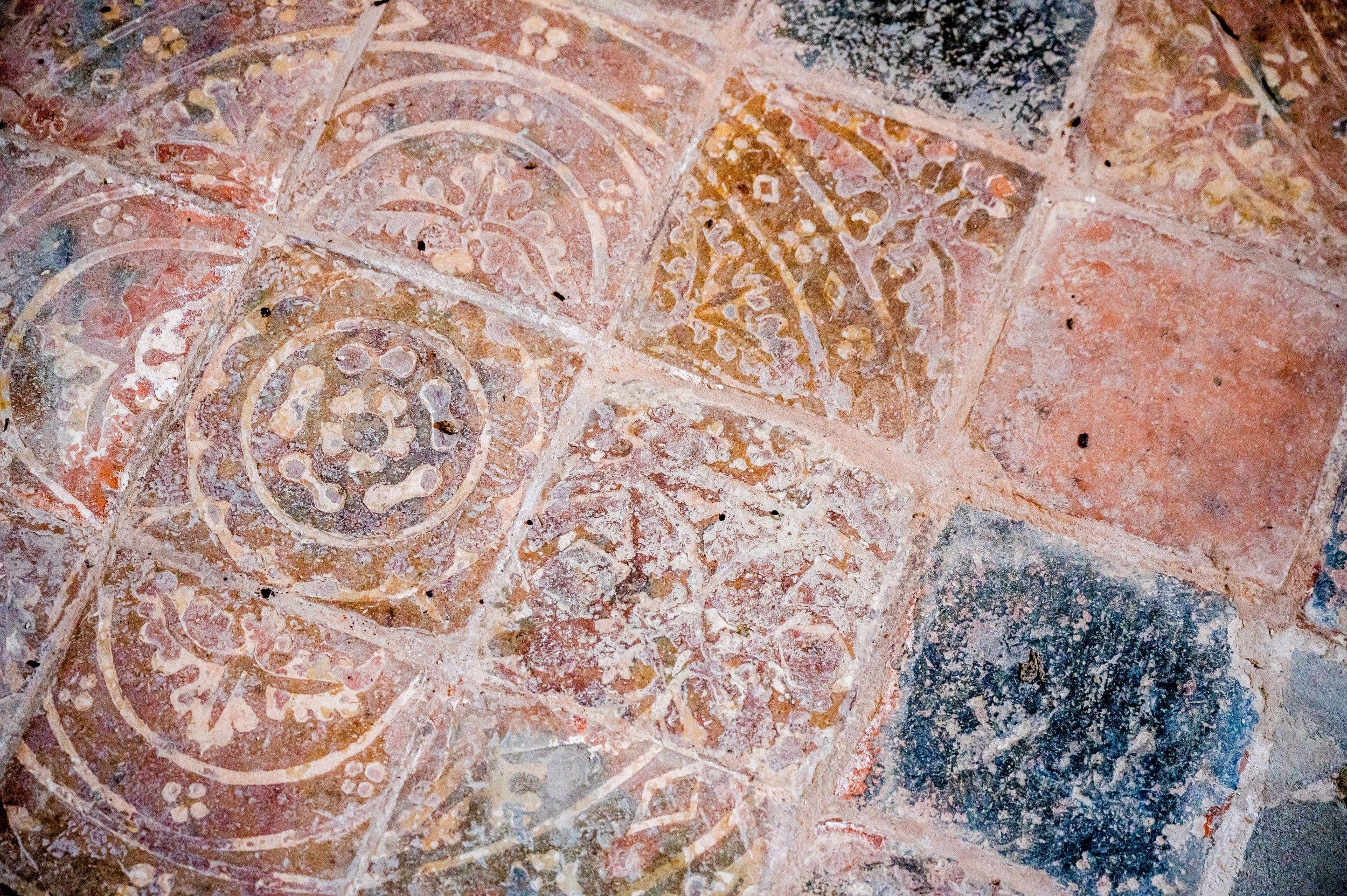St Mary
Worstead, Norfolk
An impressive 14th and 15th century flint church in Worstead, built on the proceeds of the medieval wool trade.

Isolated tranquil medieval rural jewel with 14th century wall paintings.
Crostwight, Norfolk
All Saints is a modest, medieval church in rural north-east Norfolk. It is one of two churches in the parish of Honing with Crostwight, and is still used for worship despite a lack of immediate community and connections to mains services. The church is surrounded by arable fields and is connected to lanes by grass footpaths. It stands in a churchyard which is bordered by mature trees and shrubs and connects to two substantial, mixed-species field hedges that form important wildlife corridors.
The church is listed Grade I, and retains medieval features both inside and out. The square tower, which was reduced in height in 1910 after becoming unstable, is capped with a distinctive, low pyramid of red tiles.
The church’s most important contents are the 14th century wall paintings, 15th century rood screen and bell, 13th century font, and various memorials. The paintings that survived uncovering in 1847 were uncovered again in 1938. They comprise a Tree of the Seven Deadly Sins, a Warning to Gossips, St Christopher, a particularly interesting Passion cycle and other fragments, and are considered by Historic England to represent ‘an exceptionally complete coeval scheme’ and to be ‘of great iconographical significance’. The rood screen has been dated to 1420-50, and retains unusual spandrel carvings on the dado. The bell in the tower carries an inscription that dates it to the early 15th century. The memorials include two 13th century Purbeck marble cross slab grave covers, two 15th century brass inscriptions, and 19th century and 20th century wall memorials and ledger stones.
All Saints has served its rural community for seven centuries. Research has revealed the names of many people who would have been involved with the church during that time, from those who were assessed to pay the Poll Tax in 1381 to the husband and wife who were churchwardens there for over 50 years in the 20th century. The visitors’ book indicates that some people visit because their ancestors were baptised, married or buried there; others are intrigued by the profile of the tower, and stop to investigate it; and many are drawn by the tranquillity and historical interest of the site.
Worstead, Norfolk
An impressive 14th and 15th century flint church in Worstead, built on the proceeds of the medieval wool trade.
Paston, Norfolk
Medieval 14th century church with nationally significant wall paintings and a rich historic and social heritage linked to the Paston Family of Paston Letters fame.
Barton Turf, Norfolk
St Michael & All Angels is a fine old 14th century Norfolk church with an historically important rood screen, with the complete Nine Orders of Angels.